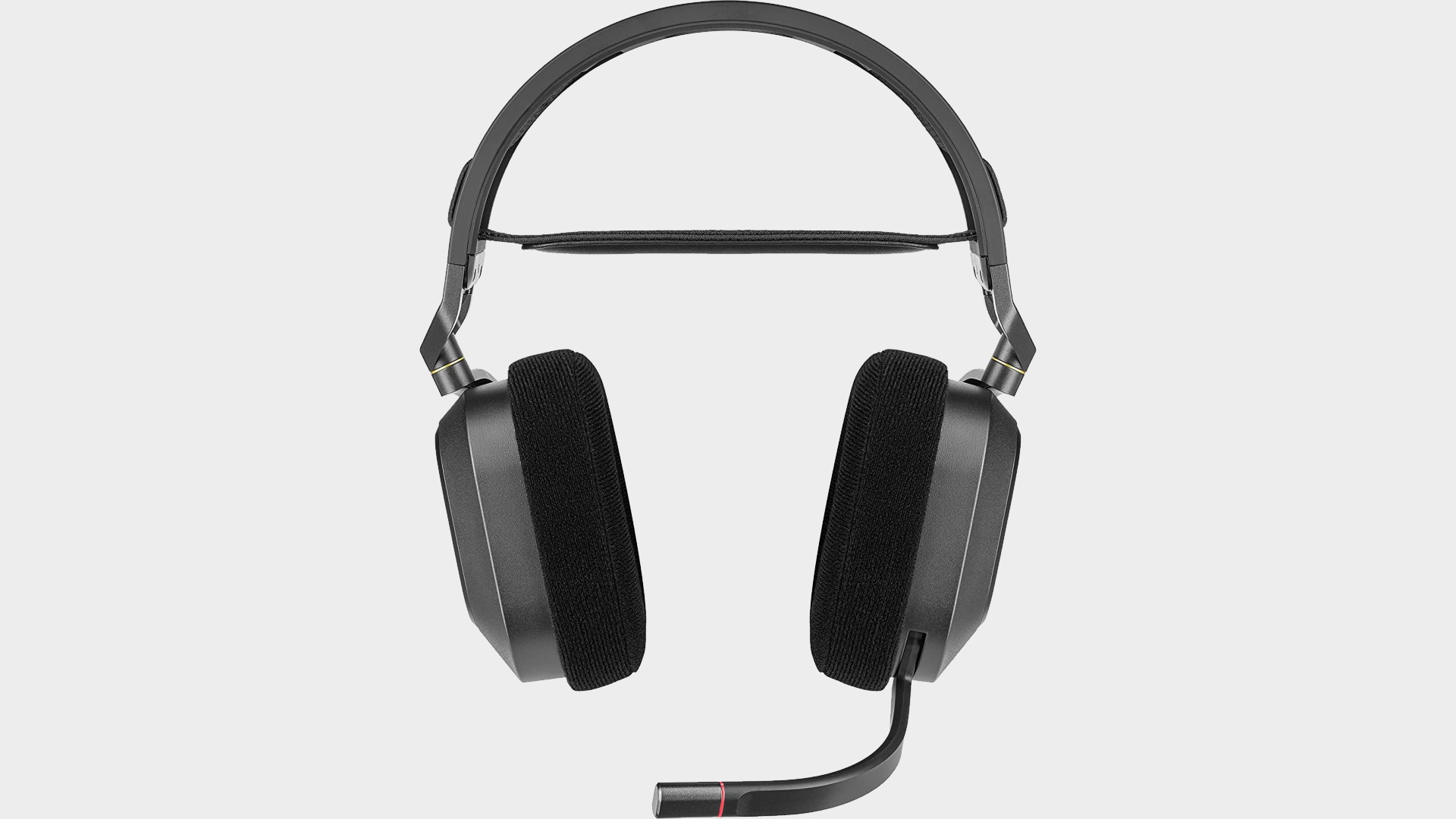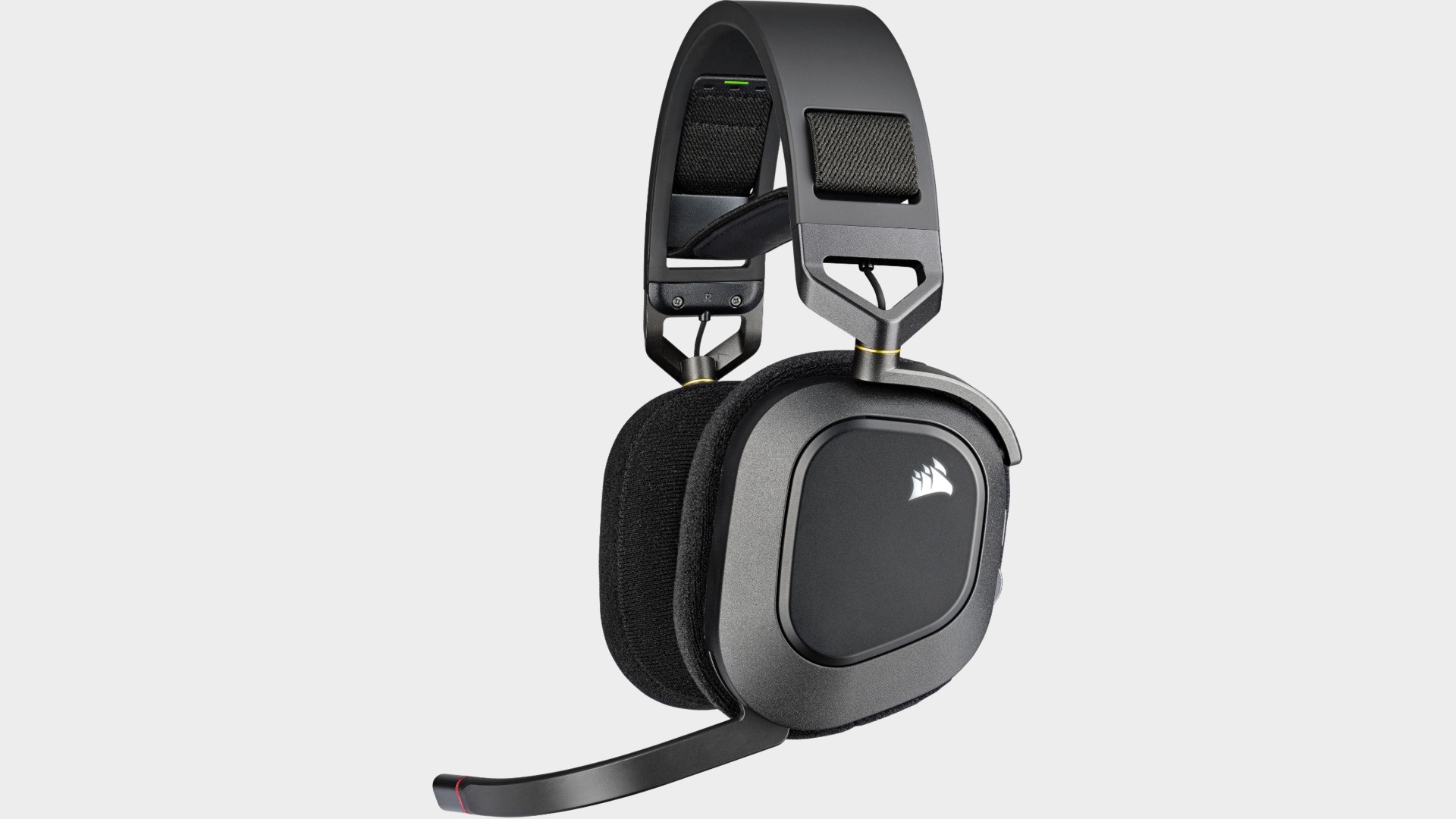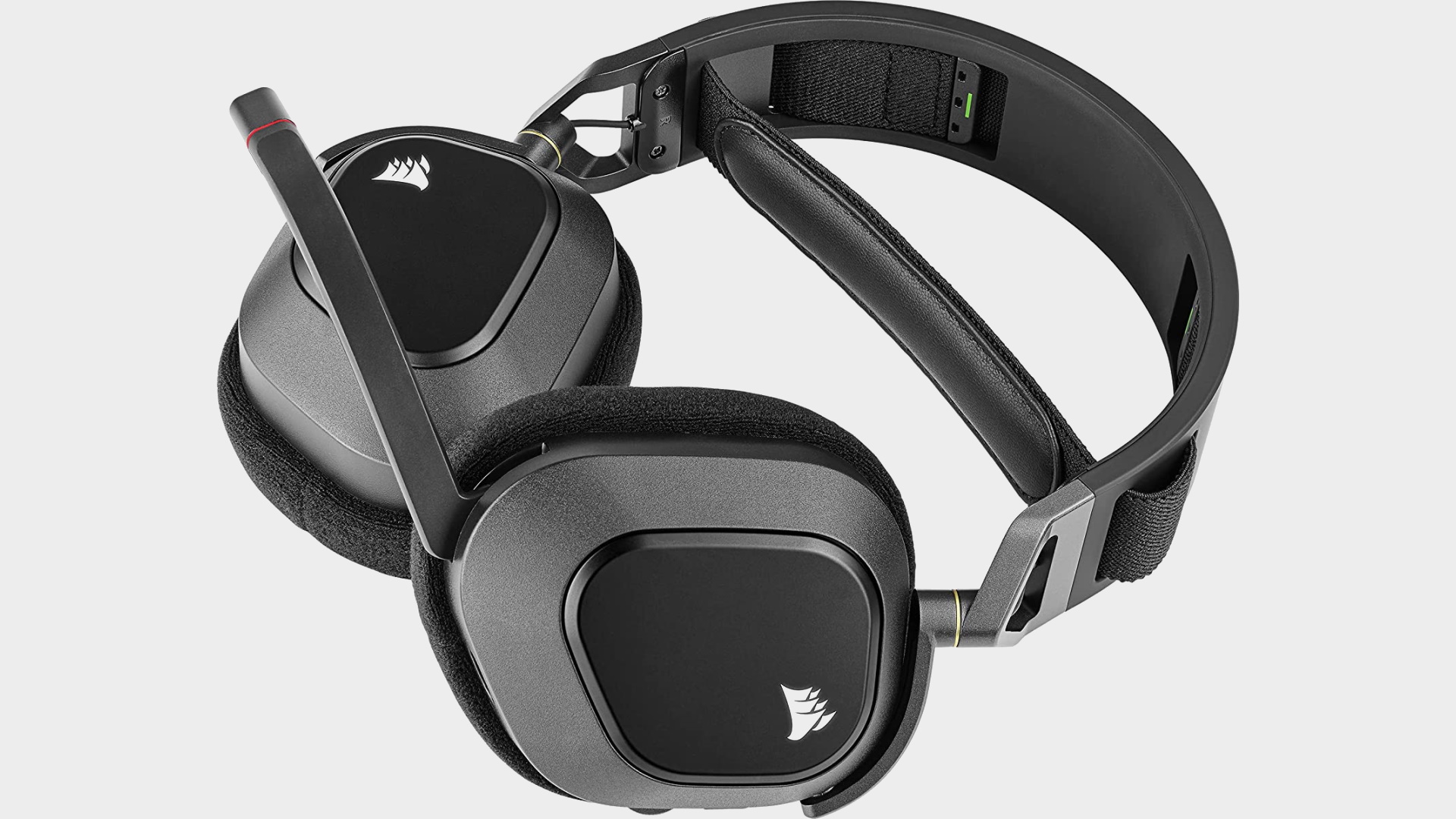Our Verdict
Corsair takes a slight detour with the HS80s but it's one that pays off in many ways. It's still shy of being the king of wireless gaming headsets.
For
- Floating headband design
- Excellent Hi-Res Audio + Dolby Atmos
- Excellent microphone
Against
- Feels bulky
- Mic isn't detachable
- No Bluetooth or 3.5mm
PC Gamer's got your back
Corsair's new HS80 RGB Wireless Gaming Headset is easily one of the best headsets the company has ever made and also one of the best wireless headsets around. It takes some of the best headset features available and executes them really well. At $150, it boasts the latest and greatest lag-free Slipstream Wireless tech, high fidelity audio, and Dolby Atmos. The microphone is outstanding and the new design lets you wear them for ages without fatigue.
It's said that imitation is the highest form of flattery and the new HS80 imitates some of the best headsets from Steelseries. Corsair has finally adopted the same floating headband design that uses an adjustable strap to evenly distribute the weight across your noggin. Furthermore, the HS80 feels bulkier on my head than any Steelseries headset but at 370g, it's not much heavier.
Type: Open-back, wireless, wired
Frequency response: 20–30,000 Hz
Drivers: 50 mm Neodymium
Connector: Slipstream Wireless Dongle, USB Cable
Microphone: Omnidirectional Broadcast grade
Weight: 360 g
Price: $149.99 / £139.99 / AU$249.99
The ear cushions use plush, breathable fabric that wraps around your ears like a warm blanket. And warm your ears will get if you experience humid summers like I am right now. The HS80's ear cups can swivel 90-degrees and each one has a backlit Corsair logo. You can change the lighting in the Corsair iCUE software but there really isn't much you can do with it. It's also not obnoxious like so many other RGB headsets and is in fact, quite understated.
Now let's talk about sound. The HS80 uses 50mm drivers that output 24-bit/48kHz audio over Slipstream wireless and a higher fidelity 24-bit/96kHz over a USB Type-C cable. The latter will require something better than your typical Spotify to notice the difference though. But all this just means that the HS80's sound fantastic with rich, full-body sound with well-balanced bass. The sub-bass can be a little lacking at times and I noticed some distortion even at low volumes. This holds the HS80 back from true greatness but there's an EQ in iCUE that you can play with to fine-tune the audio to your liking.
However, it's the spatial audio where the HS80 surprises, with impressive 3D audio and accurate positioning. This, as you can imagine, is great for games like first-person shooters or large open-world environments. This is made even better with support for Dolby Atmos and Corsair provides an automatic license with the headset. I've been playing a lot of Halo Infinite which supports Dolby Atmos and it has sounded amazing on these cans.
I could easily tell how near or far the Banished were from me even during the heat of battle with tons of gunfire. I could also easily find hidden UNSC audio logs just by following their audio cues and roaming Zeta Halo, the sounds of the wildlife or the tires of my Warthog screeching against different surfaces was pure joy. Don't even get me started on car sounds in Forza Horizon 5.

And to think this is from a wireless headset. The Slipstream Wireless protocol works flawlessly and you can even have other Corsair wireless products share a single dongle. My Corsair Sabre Pro Wireless mouse worked like a charm with the HS80. The only issue I noted was the range. Moving beyond five meters and I started getting dropouts in the audio; even disconnecting. Putting the dongle out front in the open helps a bit. While that's not a concern while you're gaming where you aren't moving, it's not so great when you go to the kitchen for a snack and want to stay chatting with your mates.
Speaking of which, the HS80 microphone is exceptional. It has excellent clarity and a natural tone to my voice with great control over plosives. It's one of the best mics I've ever used on a gaming headset and my only complaint is that you can't physically remove it from the headset like you can with the new EPOS cans. Like EPOS headset, the HS80 mic flips-to-mute but one-up's them with a soothing voice assistant who lets you know when the mic is off or on. You also have an LED ring light around the mic that changes from Red when muted to White when active.
Battery life on the HS80 was consistent with the marketing claims of 20 hours. For me, this meant charging the headset every two days—with 10 hours of work and play each day. I didn't test to see if turning off the RGB lighting made a significant difference but given how small the lights are, I doubt it. Charging the HS80 is easy thanks to a Type-C connection that also allows you to listen to them while it charges.

The Corsair HS80 is a great headset. It sounds great in both games and other media with a wonderful implementation of Dolby Atmos. If you do a lot of chat, the microphone is one of the best we've tested. For $150, it's pretty hard to find fault with these cans. The thing that keeps them from being absolute gold is the lack of Bluetooth and 3.5mm for devices that don't support Slipstream. Regardless, this is a really easy recommendation for anyone looking for a wireless headset.
Corsair takes a slight detour with the HS80s but it's one that pays off in many ways. It's still shy of being the king of wireless gaming headsets.
Kizzy is the consummate geek, with black turtleneck design sensibilities, always on the hunt for the latest, greatest, and sexiest tech. He's played Doom on the OG Pentium and still remembers how to hack a dial-a-phone. After four decades of being crazy about tech, he's literally just getting started. It's the age of the geek, baby!



